Granulomatous epididymo-orchitis, seminal vesiculitis, and funiculitis
Presentation
Patient with a history of urothelial cell carcinoma of the bladder, treated with Bacillus Calmette-Guérin (BCG), and prostate adenocarcinoma treated with radiation therapy, presents with left scrotal pain and swelling and elevated prostate-specific antigen (PSA).
Patient Data

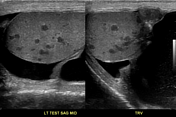

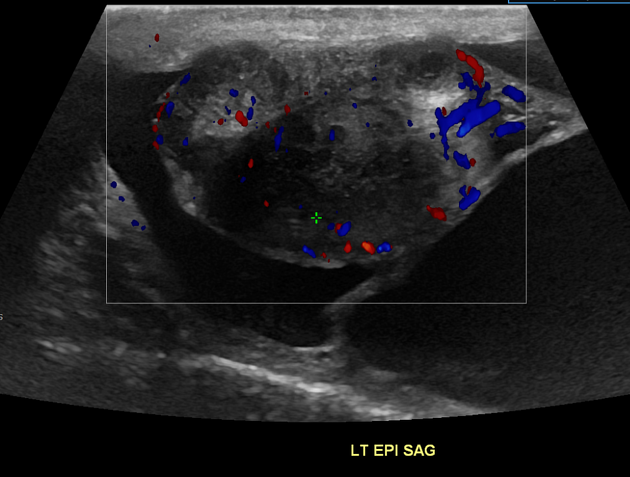
Ultrasound images of the scrotum demonstrate multiple small, hypoechoic nodules throughout the left testicle along with heterogeneous nodular thickening and hypervascularity of the left epididymal tail. A small, asymmetric left hydrocele is also present.
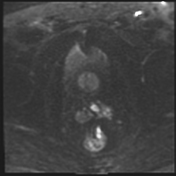

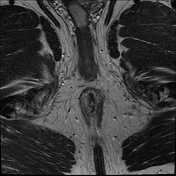

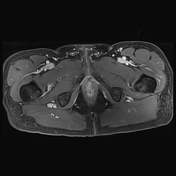

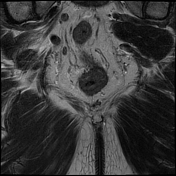

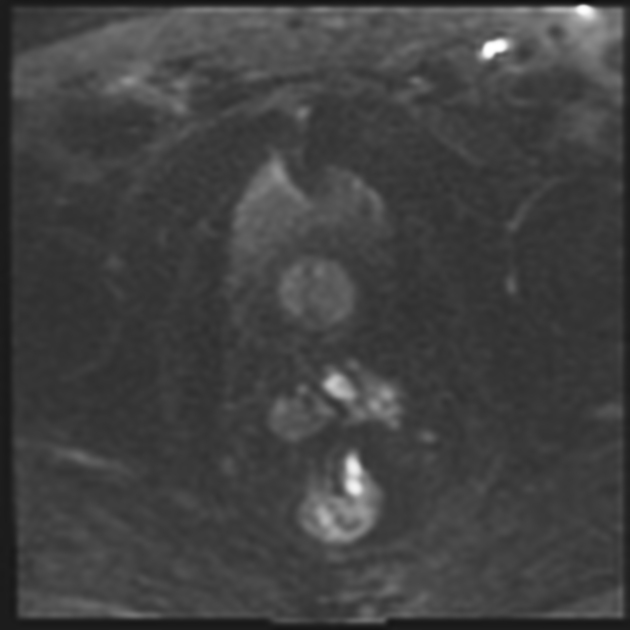
Selected sequences from concurrent prostate MRI demonstrate asymmetric thickening, diffusion restriction, and enhancement within the left seminal vesicle and vas deferens (no discrete inflammatory changes or findings of recurrent prostate cancer were evident within the radiation bed). Note also the presence of the left scrotal hydrocele.
Case Discussion
Findings of multifocal hypoechoic nodules within the left testicle are compatible with granulomas with associated epididymitis in the setting of prior BCG therapy for bladder cancer, suggestive of granulomatous epididymo-orchitis. Findings in the ipsilateral seminal vesicle and vas deferens suggest contiguous spread through the spermatic cord and concomitant seminal vesiculitis and funiculitis.
BCG is a commonly used form of intravesicular immunotherapy for treatment of early stage, non-muscle invasive bladder cancer or carcinoma-in-situ. BCG contains attenuated Mycobacterium bacilli which are capable of causing granulomatous infection, most commonly within the bladder, urinary tract, and prostate gland. Systemic manifestations of infection involving the nervous, pulmonary, or gastrointestinal systems are rare though have been described. Treatment of granulomatous disease generally involves antimycobacterial therapy.




 Unable to process the form. Check for errors and try again.
Unable to process the form. Check for errors and try again.